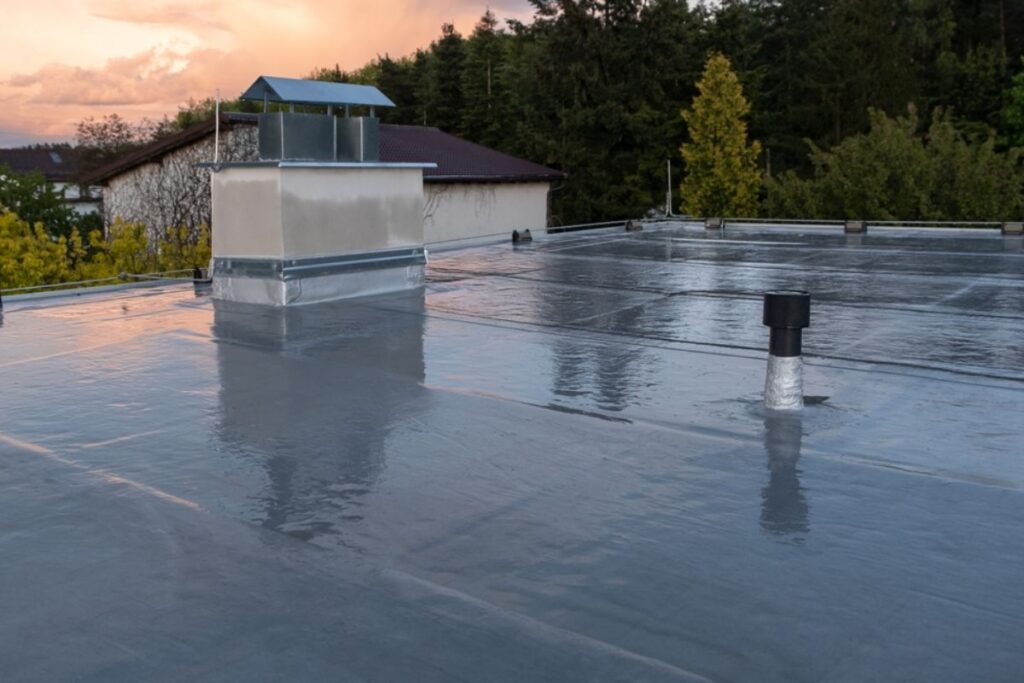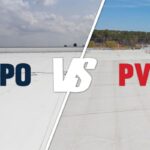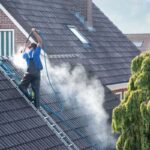If you manage a commercial building, your roof is crucial. Whether you’re a business owner, property manager, or contractor, a strong roof protects your building. It prevents leaks, cuts maintenance costs, and improves overall performance. A roof membrane system is one of the best choices for flat and low-slope roofs.
Roof membranes are popular for commercial buildings. They are versatile, durable, and can withstand tough weather. But with options like TPO, PVC, and EPDM available, how do you choose the right one?
In this guide, I’ll break it all down in simple language, including:
-
The benefits of using roof membranes
-
The most popular types (TPO, PVC, EPDM, and more)
-
A detailed comparison of each material
-
Tips on choosing the best one for your commercial project
Let’s dive in 👇
What Is a Roof Membrane?
A roofing membrane is a flexible, waterproof layer applied to flat or low-slope roofs to protect the building from water infiltration, heat, and other elements. These membranes are usually made of synthetic rubber, thermoplastic materials, or bitumen.
Unlike traditional shingles or metal roofs that work better on steep slopes, membrane roofing is ideal for flat roofs. These systems are seamless (or nearly seamless), reducing the risk of leaks and making maintenance much easier.
Why Roof Membranes Are a Smart Choice
Roof membranes offer many advantages over old-school roofing methods like Built-Up Roofs (BUR). Here’s why so many commercial buildings are switching to membrane systems:
✅ Waterproof Protection
A properly installed membrane acts as a solid barrier against water, keeping your building dry even during heavy rains.
✅ Durability
Roof membranes are designed to handle UV rays, strong winds, hail, and extreme temperatures. With heat-welded seams and tough materials, they last for years.
✅ Energy Efficiency
Some materials, like TPO and PVC, reflect sunlight instead of absorbing it. That means lower cooling bills—especially important in hot climates.
✅ Low Maintenance
These systems have fewer seams and joints, making them easier to maintain and less likely to leak over time.
✅ Lightweight
Roof membranes are lightweight, which is great for buildings that can’t handle heavy roofing materials like concrete or clay.
4 Most Common Commercial Roof Membranes
There are a few main types of roofing membranes used for commercial buildings. Each has its own strengths, so I’ll explain them one by one.
1. TPO (Thermoplastic Olefin)
TPO roofing is one of the most popular choices for commercial buildings today. Why? It’s affordable, energy-efficient, and easy to install.
Benefits of TPO:
-
Reflects sunlight – keeps your building cooler
-
UV-resistant – perfect for sunny climates
-
Mold and dirt resistant
-
Budget-friendly – usually cheaper per square foot than PVC
-
15–20 year lifespan with proper care
TPO is usually white and installed using a heat-welded method, which creates strong seams and minimizes leaks. It’s great for buildings in both hot and cold regions.
2. PVC (Polyvinyl Chloride)
PVC roofing is known for its chemical resistance and fire-retardant properties, making it ideal for industrial buildings like factories and restaurants.
Why choose PVC?
-
Resists oils, chemicals, and grease
-
Heat-welded seams for leak protection
-
Highly durable and fire-resistant
-
Great for industrial or chemical-heavy environments
PVC costs a bit more than TPO but offers superior performance in harsh environments. It’s perfect for buildings where safety and chemical exposure are major concerns.
3. EPDM (Ethylene Propylene Diene Monomer)
EPDM is a synthetic rubber roofing membrane with a strong reputation for longevity and flexibility. It’s been used for decades and remains a trusted solution.
What makes EPDM a good choice?
-
Handles temperature changes well
-
Excellent UV resistance
-
More flexible than TPO or PVC
-
Simple installation and repair
-
Ideal for cold climates
EPDM typically comes in large black rolls and is either glued or ballasted onto the roof. It’s also cost-effective and can last 20–30 years if maintained properly.
4. Modified Bitumen
Modified bitumen is a multi-layer roofing system that adds strength by combining asphalt with plastic or rubber additives. It’s durable, time-tested, and great for flat roofs.
Key Features:
-
Multi-layer protection
-
Withstands punctures and foot traffic
-
Installed with torch, cold adhesives, or self-adhesive rolls
-
Reinforced with materials like fiberglass or polyester
This type of roofing is ideal if you want a traditional system with modern performance.
Read More: TPO vs PVC Roofing Which Is Better for Your Commercial Building in 2025?
Roof Membrane Comparison Table
| Feature | TPO | PVC | EPDM | Modified Bitumen |
|---|---|---|---|---|
| Cost | $$ | $$$ | $ | $$ |
| UV Resistance | High | High | High | Medium |
| Flexibility | Medium | Medium | High | Medium |
| Chemical Resistance | Medium | High | Low | Medium |
| Fire Resistance | Medium | High | High | Medium |
| Installation Method | Heat-welded | Heat-welded | Adhered/ballasted | Torch/Adhesive |
| Typical Lifespan | 15–20 years | 20+ years | 20–30 years | 15–20 years |
TPO vs. PVC: Which One’s Better?
If you’re deciding between TPO and PVC, here’s what to consider:
-
TPO is cheaper and better for energy efficiency. Great for budget-conscious businesses in hot climates.
-
PVC is stronger against chemicals and fire. Ideal for industrial or high-risk environments.
Both use heat-welded seams, but PVC usually lasts longer and performs better under tough conditions.
EPDM vs. TPO: Which One’s Right for You?
-
EPDM handles cold weather and temperature swings better. It’s rubber-based, so it stays flexible.
-
TPO performs better in hot climates and reflects more sunlight.
-
TPO is more energy-efficient, while EPDM is simpler to install and repair.
If you’re in a snowy or cold area, EPDM might be your best bet. If you’re in a hot region, go with TPO.
Final Thoughts
There’s no one-size-fits-all answer—it depends on your climate, budget, and building type. But to sum it up:
-
TPO is ideal if you want affordability + energy savings
-
PVC is best for chemical-heavy or fire-risk environments
-
EPDM is great for durability and cold climates
-
Modified Bitumen suits buildings that need traditional toughness



